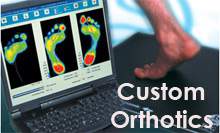
What is the Temporal Mandibular Joint
The Jaw joint (the area directly in front of the ear on either side of the head where the upper jaw and lower jaw connect) is also known as the Temporal Mandibular Joint (TMJ). These are complex joints consisting of muscles, tendons, and bones.
Symptoms of TMJ Dysfunction
The Temporal Mandibular Joint (TMJ) is one of the most complex and most used joints in the human body. TMJ has an intimate relationship between the neck and skull and should this relationship be disturbed then a wide range of symptoms can arise including the following:-
- Headaches (forehead, temples, migraine type, sinus type, shooting pain up back of head, hair or scalp painful to touch)
- Ear pain or ear ache with no infection, clogged or itchy ears
- Neck (pain, stiffness and lack of mobility, shoulder aches and pains, finger numbness)
- Decreased hearing
- Hissing, Buzzing or ringing in the ears
- Dizziness, vertigo
- Pain in jaws or cheek muscles, popping or clicking jaw joints
- Throat issues (sore throat with no infection, swallowing difficulty, laryngitis, voice changes, frequent coughing and the feeling something is always stuck in the throat)
- Mouth (limited opening, discomfort, jaw deviates to one side when opening, cannot find bite)
- Bloodshot eyes, or pain behind the eyes and bulging eyes
What causes Temporal Mandibular Joint (TMJ)
- Gum chewing (excessive)
- Grinding teeth (consciously or unconsciously during sleep)
- Chewing on hard food
- Jaw injury (sport, fall or other type)
- Occupational (work related)
- Stress
Short term TMJ relief
- Eating soft food
- Avoid chewing gum
- Ice packs
- Avoid wide yawning
- Relieve stress/tension
Treatment Techniques
TMJ dysfunction can be treated with manual techniques (MT), transcutaneous (non-needles) electro-acupuncture (TCEA), manual lymphatic drainage (MLD) and lifestyle changes including stretches or gentle exercises.
Our physio is a preferred practitioner for Temporal Mandibular Joint, working closely with dentists and orthodontists

